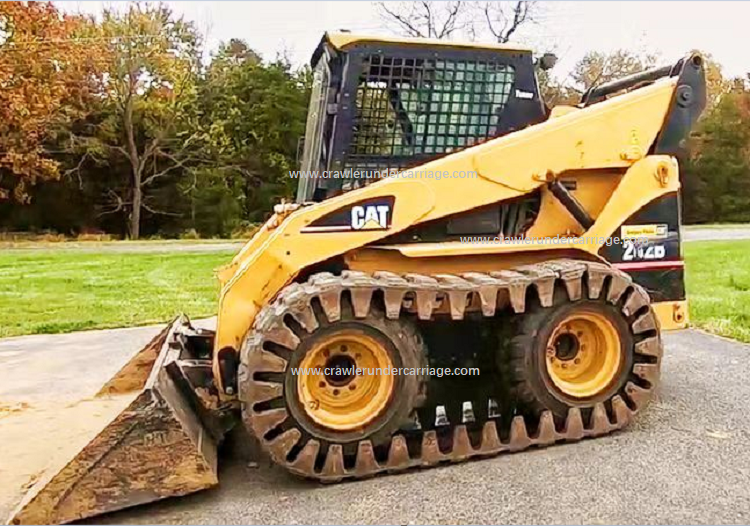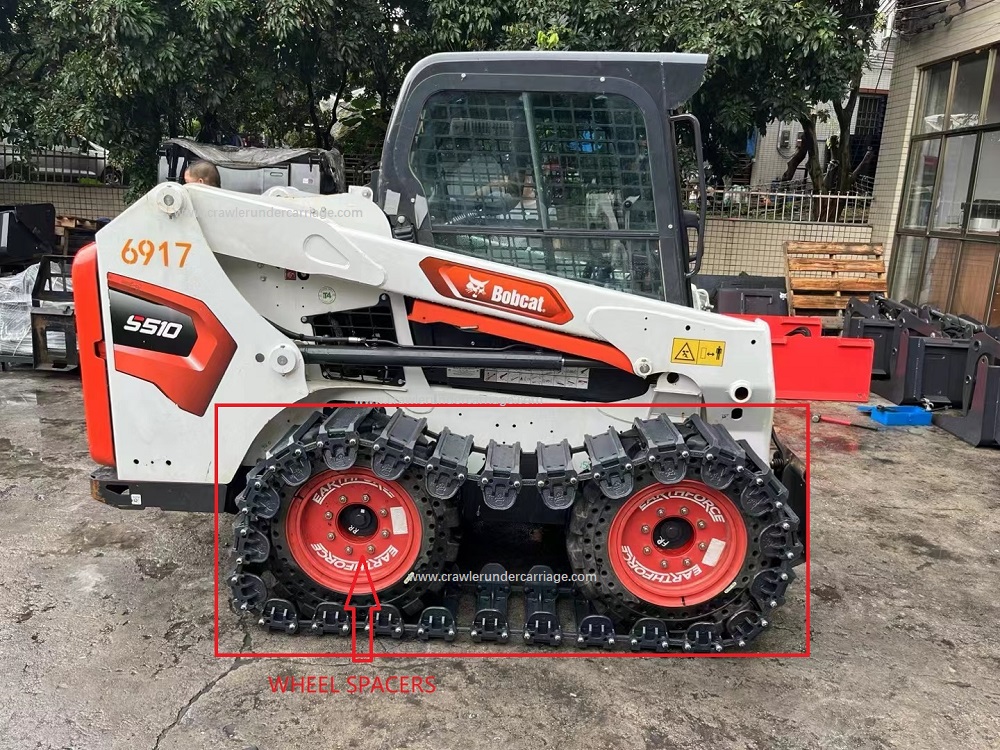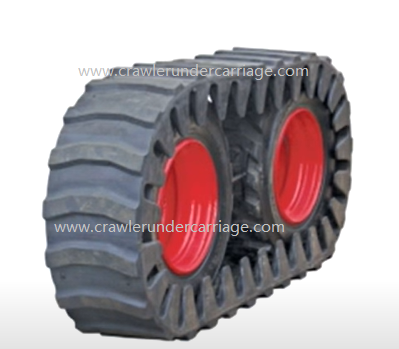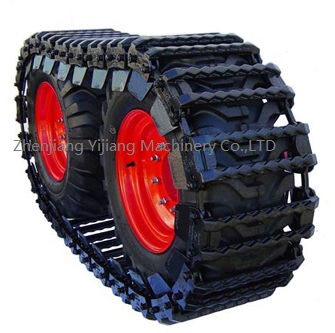The skid steer loader is a compact and flexible multi-functional engineering machine. Due to its unique skid steer steering method and strong adaptability, it is widely used in various working conditions. For example, construction sites, agriculture, municipal engineering, logistics and warehousing, landscaping, mining and stone quarrying, emergency rescue, and special modified applications.
According to the difference in the walking mechanism, skid steer loaders are currently divided into two types: tire type and track type. Both types of machines have their own advantages and disadvantages. People need to choose reasonably according to the working place and task requirements of the machine.
Wheel loaders have disadvantages on uphill or muddy roads
The crawler loader corrects the disadvantage of the wheel loader
However, in order to perfectly combine the advantages of both the tire type and the track type, a tire-mounted track has been recently developed. Depending on the working terrain, rubber tracks and steel tracks can be selected.
After installing tracks, a tire-type skid steer loader can enjoy the following advantages:
1. Enhanced traction: Tracks provide a larger ground contact area, improving traction on soft, muddy or uneven ground and reducing slippage.
2. Reduced ground pressure: Tracks distribute the machine's weight over a larger area, reducing ground pressure and making it suitable for soft or easily damaged ground, avoiding excessive sinking or damage.
3. Improved stability: The track design increases the machine's stability, especially when working on slopes or uneven ground, reducing the risk of tipping over.
4. Adaptability to complex terrain: Tracks can better handle rough, rocky or uneven terrain, maintaining smooth operation and reducing jolts.
5. Reduced tire wear: Tracks prevent tire wear and punctures in harsh environments, extending tire life and reducing maintenance costs.
6. Increased operational efficiency: Tracks provide better traction and stability in complex terrain, reducing downtime due to slippage or getting stuck, and improving work efficiency.
7. Reduced vibration: Tracks can absorb some of the ground impact, reducing the vibration transmitted to the operator and enhancing operating comfort.
8. Adaptability to various climates: Tracks perform better in adverse weather conditions such as snow, ice or mud, maintaining good traction.
In summary, tracks can significantly enhance the performance and efficiency of skid steer loaders in complex terrains and harsh conditions.










